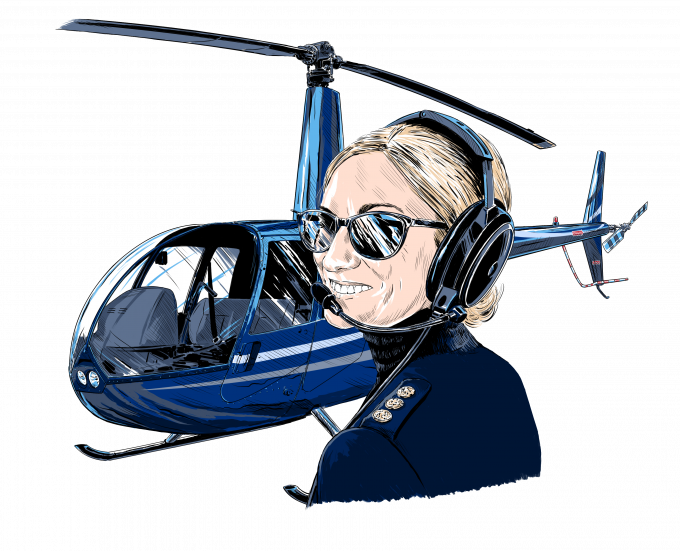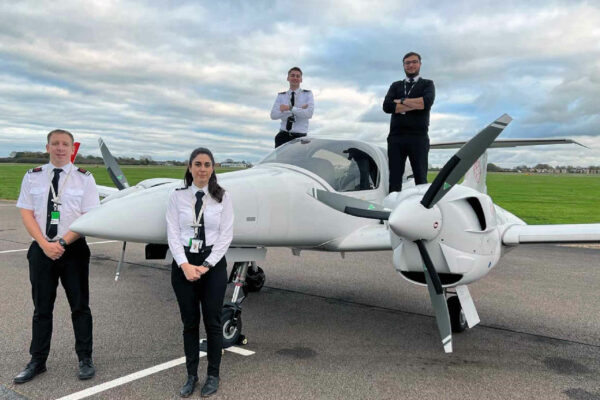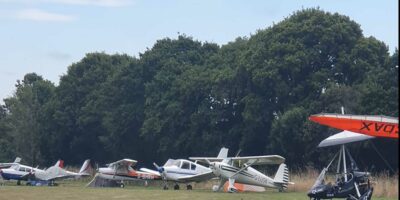Coming to rotary from the fixed-wing world, the requirements for keeping a PPL(H) valid initially surprised me, in that they’re quite different from – and in many ways quite a lot more rigorous than – the obligations of a PPL(A). I should qualify that observation by first highlighting the (perhaps astonishing) fact that you actually only need to have flown two hours a year to maintain your helicopter licence, plus take an annual PC.
At first glance, this seems a somewhat less onerous requirement than the 12 hours plus an hour’s training flight with an instructor needed for fixed-wing. I think I’m right in saying that the two heli hours can even include the time you spend on the PC. Importantly, however, the heli requirements are per type, so if you’re collecting type ratings, you’ll quite quickly rack up the number of hours you need to have done, and the number of PCs.
I should explain that in the heli world, even very similar aircraft such as the Robinson R22 and R44 require their own type ratings, so you can’t automatically fly both when you qualify on one. This often comes as a surprise to fixed-wing pilots, who can merrily hop from one SEP type to another and count hours flown on each towards the total (and TMG hours, too).
The type rating course for each single-engined helicopter is five hours’ flying (for twin-engined machines, it’s eight hours for your first one, and three hours for subsequent types), plus groundschool, a ground exam and a skills test. Imagine having to go through all that to go from a PA28 to a 172!
The biggest difference, though, is that the PC is a different kettle of fish from the hour with an instructor and logbook signature required to keep a fixed-wing licence valid. It’s an annual flight with an examiner (not just an instructor), with paperwork sent off to the CAA, and it can loosely be summed up as a slightly scaled down rerun of the Skill Test. It’s all rather formal, as I’ll come onto in a minute, and that’s something I wasn’t really prepared for when the first anniversary of my PPL(H) came around.
Because I’d spent a few weeks in the summer of 2018 gaining my R44 type rating, having just qualified on the R22 (a rating I let lapse, as the R44 is more useful and I’d then only have one to maintain), the anniversary, and therefore my PC, is now locked into August. It’s quite bad timing in a way, because although the weather is theoretically better, it also means that at least two months’ rotary flying budget is blown in one fell swoop. Which is a shame, as it’s not a particularly fun use of said budget.
As with the Skill Test, there’s a fair bit of preamble. The examiner reads a quite lengthy script covering what to expect during the flight. I deliver a ‘MATED’ brief* and answer a series of quick-fire questions about the aircraft (max all-up weight, rotor rpm limits, VNE in and out of autorotation… that kind of thing). By the time I reach the helicopter, I’m feeling nervous and wishing I’d added ‘test anxiety’ to the list of threat and error management items I’d included in my brief. It certainly seems to be the case that one makes infuriatingly stupid mistakes during a PC that one never would when flying around normally!
As in the Skill Test, you treat the examiner as a passenger / interested observer, so once the Check A is complete (be prepared to name specific parts!), a passenger safety briefing is next on the agenda. The flight itself would constitute a seriously bad day if all the emergencies were to happen for real. The foggles come out for some instrument flying.
The hydraulics get switched off for an approach and running landing, an exercise that always leaves me wishing I’d put in more effort at the gym. There are several autorotations, spot turns, crosswind and downwind landings, engine off in the hover, governor-off approaches – and probably some more that I’ve forgotten. In short, you’re really put through your paces.
This year’s weather challenge was searing heat. The outside air temperature gauge read 38°, but if you’ve ever been in a Robinson on a hot summer’s day, you’ll know it’s a flying greenhouse, and worse than that inside, especially in the hover. Up and about, the crop fires show the wind direction loud and clear, and field selection highlights the fact that the early harvest has left plenty of good landing options.
Everyone thinks you’re in a worse situation if you have an engine failure in a helicopter than if you have one in an aeroplane, but the PC reminds you that there are SO many more suitable landing sites for helicopters than there are for aeroplanes. And while the glide range is admittedly not great (around 1:4 – eek!), a helicopter in autorotation doesn’t simply fall out of the sky, and the PC ensures we practice them every year, keeping those skills fresh.
In a previous year, I had a 15kt wind and rain to contend with on a PC – conditions I’d never fly in alone, but for which it’s always good to have some practice in case you get caught out by an unforecast change of weather. I’m a great advocate of flying with instructors and more experienced pilots from time to time anyway, even without the PC requirement, as the learning never stops. The PC just formalises that, and I often think when I’m in my car that if drivers had to undergo the rigorous retesting pilots do, the roads might just be a safer place…
*A ‘MATED’ brief: Met, Aircraft, aTc, Exercise (purpose of the flight), Duties (who does what)







